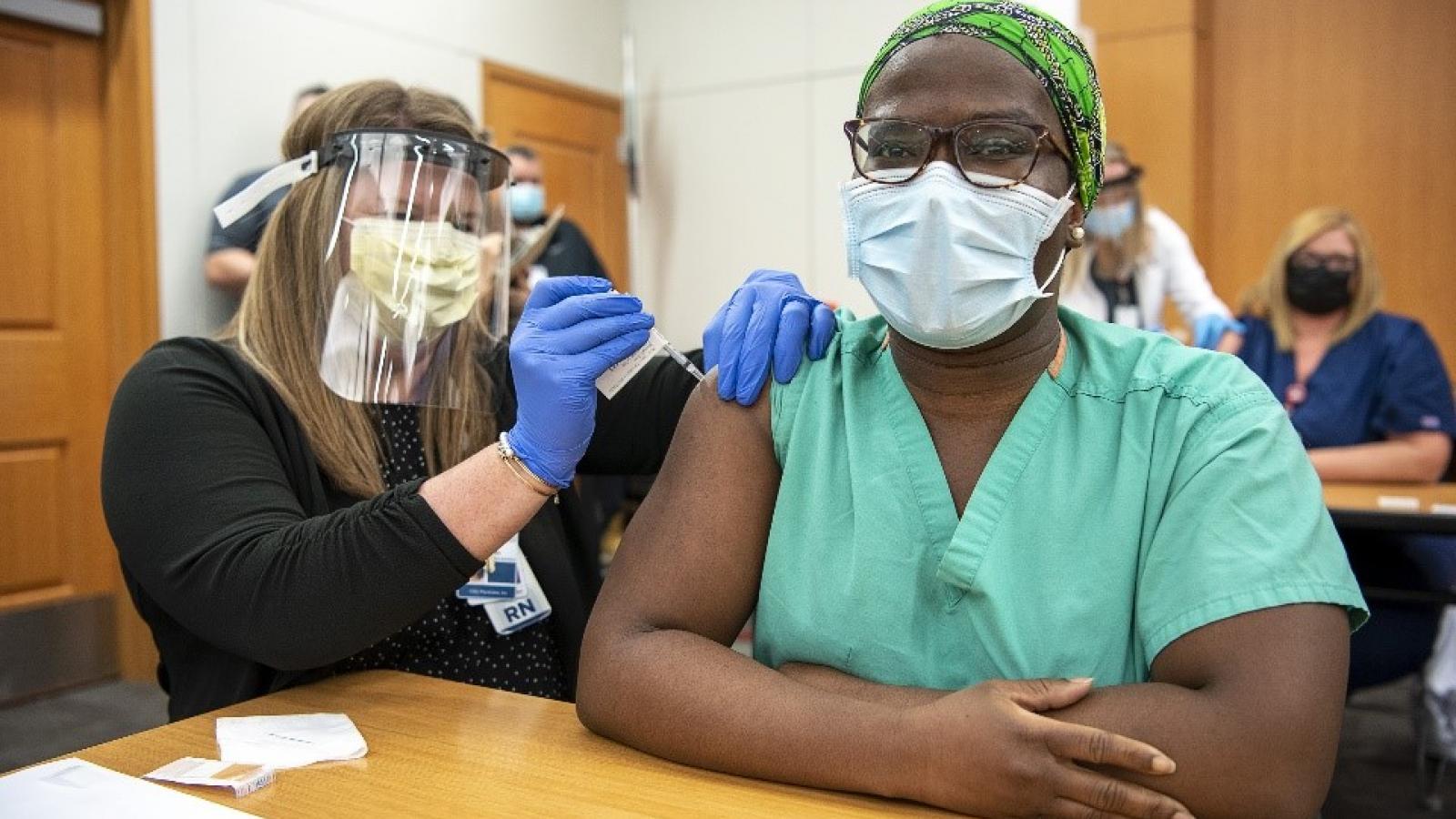The science behind the COVID mRNA vaccines

Photo: The first vaccinations being administered at The Ohio State University on December 14th, 2020.
Earlier this month the Pfizer-BioNTech vaccine was approved in the EU and the US with the first doses of the vaccine rolling out just before the holidays. Moderna’s vaccine quickly followed. To understand how these COVID vaccines were developed, we must first understand the name behind coronavirus. The name coronavirus is derived from the Latin term “corona” meaning “crown” because of the spikes spanning the outside layer of the virus. These spikes are what helps the virus attach to and infect our cells.
To state it simply, the vaccine is the instructions for our cells to produce these spike structures. The vaccine is composed of messenger-RNA, or genetic material that is made from DNA, which contains the blueprint for the cells to make the coronavirus spike proteins. When our cells start producing the spike proteins, our cells recognize it as foreign material and produce an immune response against it by making antibodies. Since our cells are only making the spike protein, there is no actual infection with the virus itself. If our bodies are exposed to the virus after receiving the vaccine, our immune cells will recognize the spikes on the virus and prevent an infection from occurring.
This type of vaccine has never been approved before, despite its ability to be quickly developed. The idea of using mRNA vaccines has been around for almost 30 years owing to the work of Dr. Katalin Karikó. Dr. Karikó persevered through years of rejections from grant-funding agencies, but alongside her collaborator, Drew Weissman, they finally made a key discovery. The initial problem with synthetic mRNA being injected into the body was that it signaled an inflammatory response. Their discovery was modifying one of the building blocks of mRNA so that it could enter the cells without being detected. Dr. Karikó is now the senior vice president of BioNTech RNA Pharmaceuticals, the company that has paired up with Pfizer to develop one of the COVID vaccines that is currently being shipped across the country.
The virus isn’t the only thing spreading right now. This new vaccine has incurred skepticism, confusion, and controversy, likely because a vaccine of this type has never been approved before. A common myth is that the vaccine can change or interact with our DNA. One reason this isn’t true is because the mRNA cannot enter the cell’s nucleus, which is where the DNA is stored. Another reason is that mRNA is very unstable, and it quickly breaks down after the cell reads it to make proteins. The new COVID vaccine is also not the first to undergo clinical trials. Early-stage clinical trials with mRNA vaccines have taken place for influenza, Zika, rabies, and cytomegalovirus. A common challenge with mRNA vaccines is getting them delivered into the cells without losing stability and efficacy, and recent advancements with this technology have helped improve these challenges.
These vaccines make us one step closer to living in a post-pandemic world. The next step is achieving herd immunity. You can do your part by getting vaccinated when it’s available to you and encouraging your friends and family to do the same.
Written by TPS Fellow Rachel Combs
Photo Source:
References:

